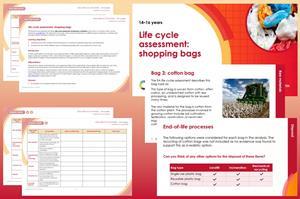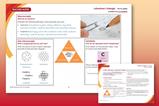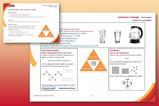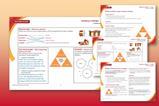Challenge learners’ thinking about which products have the least environmental impact
Use this resource to introduce learners to life cycle assessments using a real-world example. As well as collecting and evaluating information about the life cycles of three different types of shopping bag, learners will see how science directly influences government policy.
This resource accompanies the article Life cycle assessment of takeaway containers in Education in Chemistry. The article looks at a study of the environmental impact of different types of takeaway containers and provides another example to bring into your teaching.
Introduction
In 2008, supermarkets in the UK gave away approximately 10 billion lightweight single-use carrier bags. This equates to around 10 bags a week per household. In 2011, the Environment Agency conducted a life cycle assessment (LCA) of carrier bags used in supermarkets in England. This provided the evidence for the government to act on single-use plastic waste.
Learning objectives
- Understand how the overall environmental impact of a product is assessed using a life cycle assessment.
- Evaluate the use of three different types of shopping bag using a life cycle assessment of each one.
The task
Learners are asked to complete LCA for three different types of supermarket carrier bag:
- single-use plastic bag
- reusable plastic bag
- cotton bag
They then have to make a recommendation to the Department for Food and Rural Affairs (DEFRA) based on their assessment. Use the prompts:
- Which of the bags do you think has the least overall environmental impact?
- Use evidence from your completed LCA to support your suggested action.
What is a life cycle assessment?
A life cycle assessment looks at every stage of a product’s life and assesses the impact it has on the environment during each stage.
Five main stages are analysed during a life cycle assessment:
- obtaining the raw materials
- manufacturing and processing
- transport
- consumer use
- disposal
How to use this resource
There are two versions of the blank LCA table in the student sheet. One (marked with one star) is scaffolded with a set of key questions to prompt learners to include information that will help them to draw valid comparisons.
You can use the slides to support learners to fill in the LCA. They will also need to draw on their own subject knowledge. Alternatively, point learners to online resources that will help them fill in the assessment independently. The Environment Agency Evidence report: Life cycle assessment of supermarket carrier bags: a review of the bags available in 2006 is a good place to start.
More resources
- For LCAs of different products, try these activities based on period products and fashion for learners aged 14–16.
- Find more ideas on teaching about sustainable production and consumption, with a worksheet for learners to research and reflect on their own habits.
- Use science research news slides to show learners how scientists are finding ways to reduce environmental impact at the end of products’ lives, by improving plastics recycling, or turning plastic bottles into jet fuel.
- Introduce your learners to Raquel who saves waste pineapple leaves from being burned and turns them into fabric.
Downloads
LCA shopping bags presentation
Presentation | PDF, Size 1.64 mbLCA shopping bags student sheet
Handout | PDF, Size 0.13 mbLCA shopping bags teacher notes
Handout | PDF, Size 0.15 mbLCA shopping bags presentation
Presentation | PowerPoint, Size 1.13 mbLCA shopping bags student sheet
Editable handout | Word, Size 0.46 mbLCA shopping bags teacher notes
Handout | Word, Size 0.46 mb
Additional information
This resource was developed from an original created by Kristy Turner, published along with the feature article What’s in a bag? in September 2019.
























No comments yet